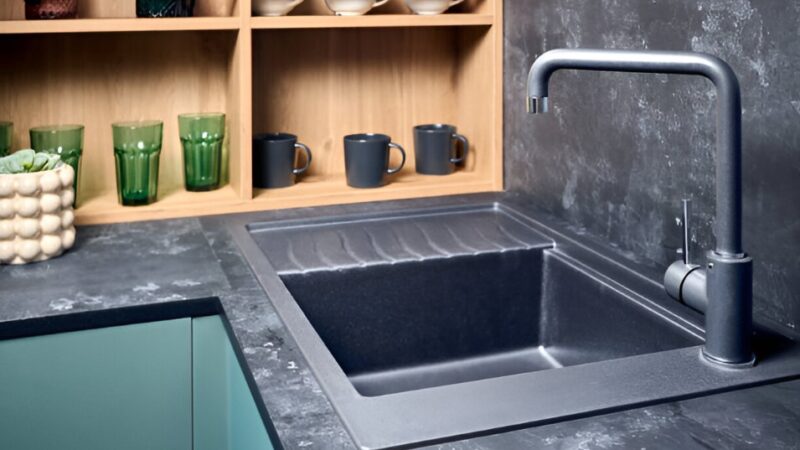Expert Verified Guide to Buying Ceiling Speakers

As far as ceiling speaker systems are concerned, they provide an excellent means for getting first-class sound into your home without spoiling the look of the room with lots of clutter. Depending on your goals, you can use ceiling speakers either to improve the sound quality in your home theatre, spread music throughout your house, or create a cohesive sound throughout the room. But sometimes, having too many options in one market is quite confusing, especially when choosing the ideal ceiling speaker system.
Here is a complete guide that’s aimed at offering everything you should know so that you end up getting the appropriate ceiling speaker system that suits your hearing wants and desires.
Why choose ceiling speakers?
Ceiling speakers offer several advantages:
Space-saving: They don’t require any shelf or floor space.
Aesthetic Appeal: They look clean because they mix in well with your ceiling.
Sound Distribution: They provide a wide sound dispersion, filling the room with balanced audio.
Versatility: Ideal for a range of applications, such as outdoor areas, multi-room audio systems, and home theatres.
Key Considerations
Purpose and Placement
There are two primary things to keep in mind before focusing on the specific technicalities of ceiling speakers the application and the location. Is it for home theatre applications, music in a living room, or even for a patio outdoors? Your selection of power, size, and durability will be informed by the proposed use.
Room Size and Acoustics
The room’s size and its acoustics are crucial factors. This is especially true when the room is large, and a strong speaker or two may be needed in order to balance the sound throughout the room. Some rooms with high ceilings, hard surfaces, and little or no furniture could require additional acoustic materials and/or certain kinds of speakers to prevent echoes and provide good sound quality.
Speaker Types and Sizes
The first thing one must consider is that there are different types and sizes of ceiling speakers. Common sizes include 6.5-inch and 8-inch speakers. Large speakers are usually good for bass and can therefore be used in large rooms as well as the main or only speakers, and vice versa.
Single Stereo Speakers: These have dual tweeters and are ideal for small rooms where stereo separation isn’t crucial.
Dual Stereo Speakers: Perfect for larger spaces where stereo sound is important.
3-Way Speakers: Include a woofer, mid-range driver, and tweeter for a full-range sound, ideal for home theatres.
Power Handling and Sensitivity
Power handling refers to the amount of power a speaker can handle without distortion. This is measured in watts. Ensure your speakers can handle the power output of your amplifier or receiver. Sensitivity, measured in decibels (dB), indicates how efficiently a speaker converts power into sound. Higher sensitivity means louder sound at a given power level.
Frequency Response
The frequency response indicates the range of sounds a speaker can reproduce, typically measured in Hertz (Hz). A broader frequency response means the speaker can reproduce a wider range of sounds. Look for speakers with a frequency response that suits your audio preferences, whether you prioritize deep bass or crisp highs.
Build Quality and Materials
High-quality materials ensure better sound and longer lifespan. Look for speakers with robust construction and durable components:
Woofers: Made from materials like polypropylene, Kevlar, or fibreglass for durability and better bass response.
Tweeters: Often made from silk, aluminium, or titanium, affecting the clarity of high frequencies.
Grilles: Should be rust-resistant, especially for outdoor or bathroom installations.
Installation Considerations
Wiring
Everything should be connected in the right manner in order to achieve peak functionality. Make use of high-quality speaker wires and double-check to see that they are rated correctly for in-wall usage. If you are not comfortable with the idea of wire running through walls and ceilings, it may be a good idea to have a professional do the installation.
Amplification
Make sure that the power handling of your amplifier or receiver is appropriate for your ceiling speakers. Speakers that are not powerful enough will not be able to perform, whereas those that are too powerful may end up getting damaged.
Positioning
Home Theater: Position ceiling speakers behind the primary listening location and tilt them towards the listening area for a surround sound configuration.
Multi-Room Audio: Place speakers so that all the sound areas are equal. To get the stereo sound for each room, the speakers should be in pairs.
Outdoor: Weather-resistant speakers should be used and put beneath the eave or in any sheltered locations.
Cut-Out Templates
Many ceiling speakers also have either pre-cut templates or instructions on how to cut the hole correctly. It is good practice to measure twice before marking.
Acoustic Treatment
However, if the space tends to produce a lot of echoes or if you just want better clarity in the music, you might need to look into other sound treatments like bass traps or acoustic panels.
Popular Brands and Models
Sonos: Known for smart home integration and excellent sound quality, Sonos ceiling speakers are a top choice for multi-room audio systems.
Polk Audio: Offers a wide range of ceiling speakers with good performance and affordability.
Bose: is renowned for its superior sound quality and sleek designs.
Klipsch: Known for their high sensitivity and powerful sound output, they are ideal for home theatres.
Yamaha: Provides reliable and well-balanced speakers suitable for various applications.
Advanced Features
Bluetooth and Wi-Fi Connectivity
Aside from traditional wired ceiling speakers, there are also many models on the market with different connection options, from Bluetooth to Wi-Fi, which facilitates streaming music from devices directly.
Voice Control
And if you have built-in support for voice assistants like Alexa or Google Assistant, then you get an added layer of convenience by using your voice to control your devices.
Adjustable Tweeters and Woofers
Some models offer the option of changing the angle of the tweeters and woofers, which allows you to customize the sound direction and increase the efficiency of the audio in your room.
Budget Considerations
Ceiling speakers can be found with varying pricing, from below $100 to over $1000. The cost of the product should be determined by the needs of the consumers and the number of speakers to be installed. Among the recommendations is that it is better to invest in high-quality speakers to achieve better sound and a longer speaker lifespan.
Final Tips
Demo Before You Buy
If possible, listen to the speakers in a store before purchasing. Pay attention to clarity, bass response, and overall sound quality.
Read Reviews
Customer reviews and professional evaluations can provide valuable insights into the performance and reliability of different speaker models.
Warranty and Support
Examine the available customer support alternatives and the warranty. Protection for your investment and peace of mind are two benefits of a quality warranty.
Professional Installation
If you’re not sure you can do it yourself, think about hiring an expert installer. Your ceiling speakers’ longevity and performance can be greatly impacted by a well-installed system.
Conclusion
The selection of ceiling speakers a consumer needs to purchase depends on factors such as requirements, room acoustics, and affordability. Speakers can be differentiated by the type of speaker used, the power handling capacity, the frequency response, and the need for installation, which makes it easier for you to come across the best ceiling speaker for you. If you are planning to install a home cinema, want to distribute music in different rooms, or want to connect some outdoor areas, ceiling speakers are the perfect design solution for these tasks. Happy listening!
Read Also – 7 hotel with rooftop bar Kuala Lumpur






